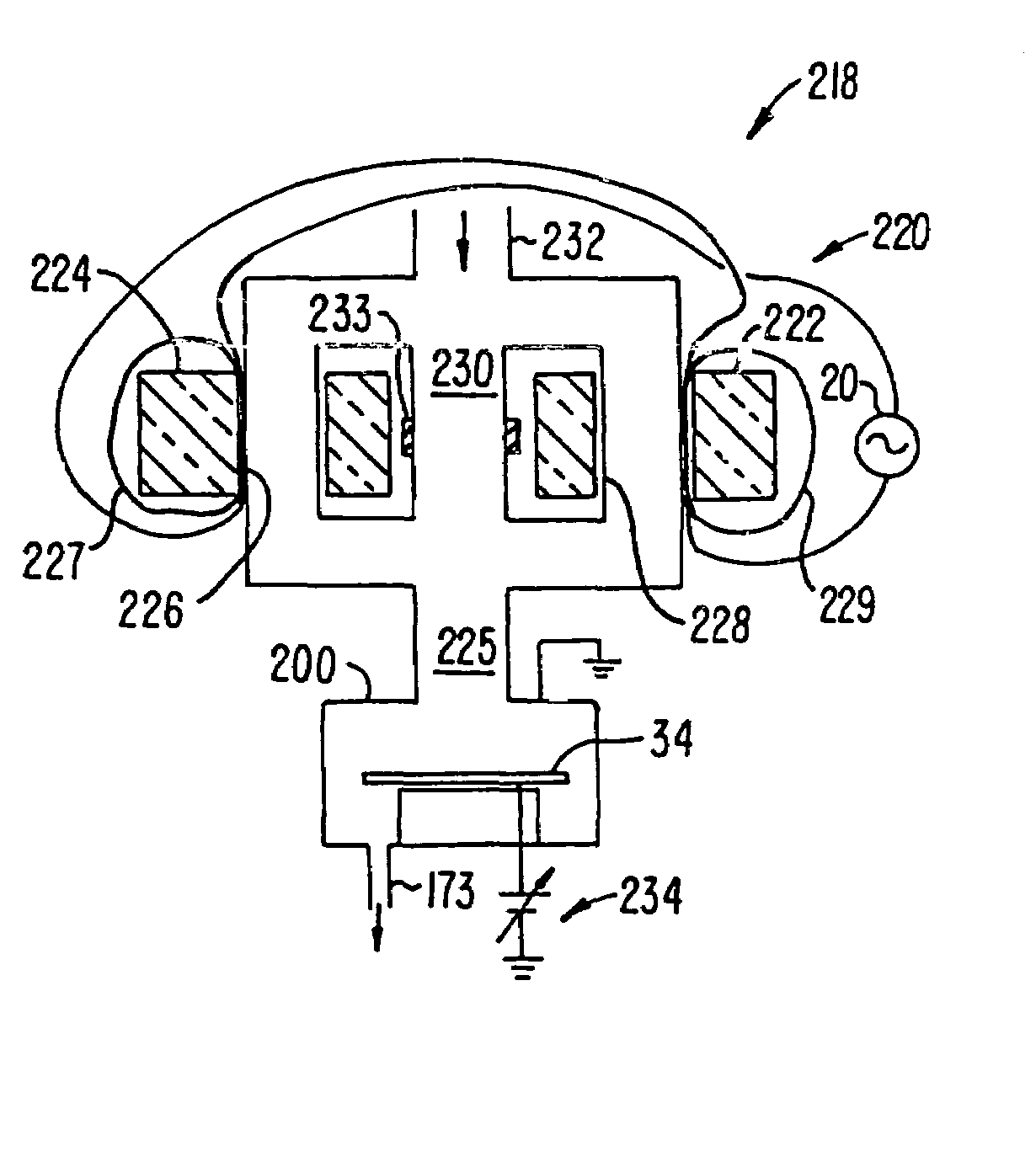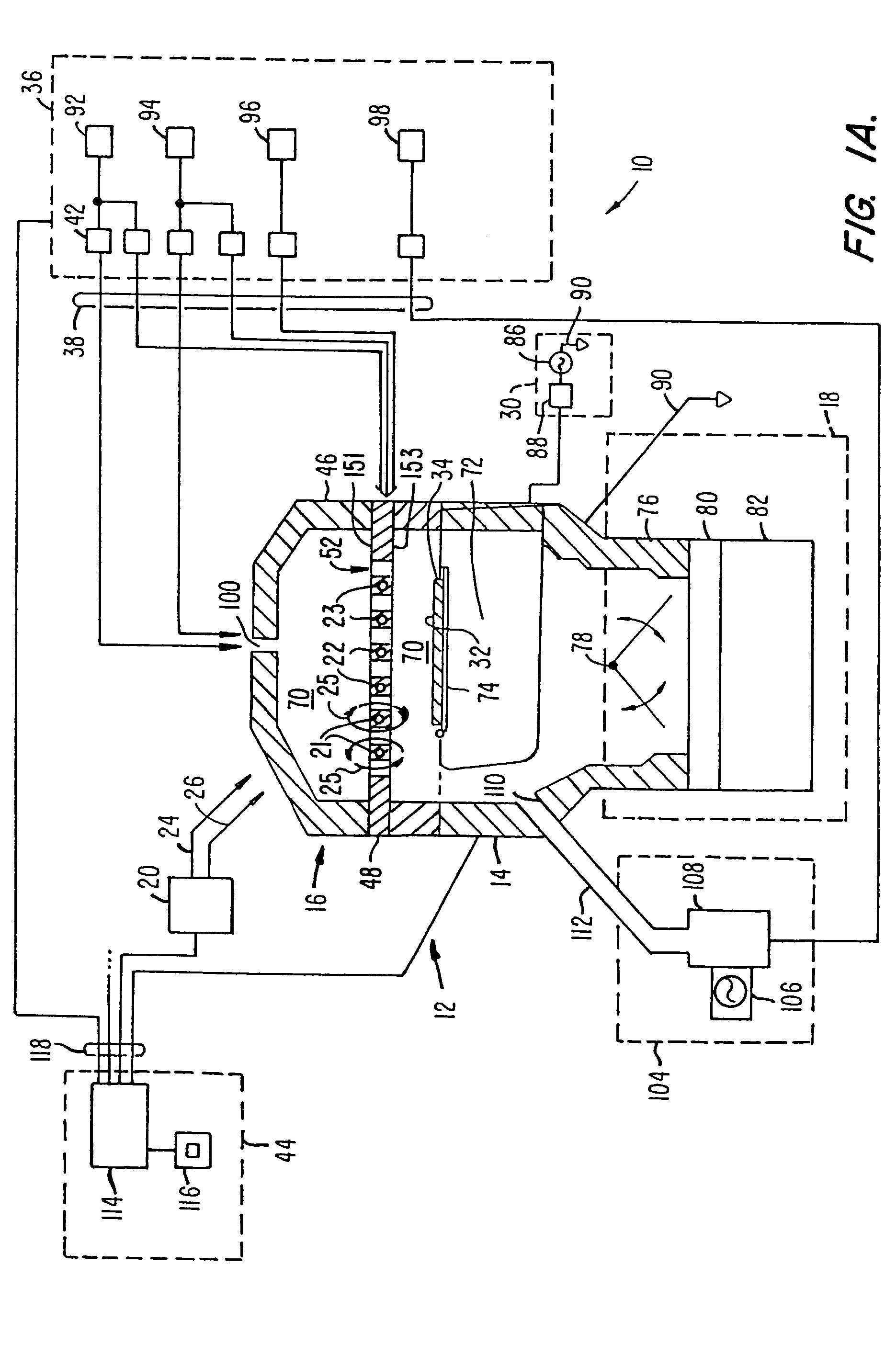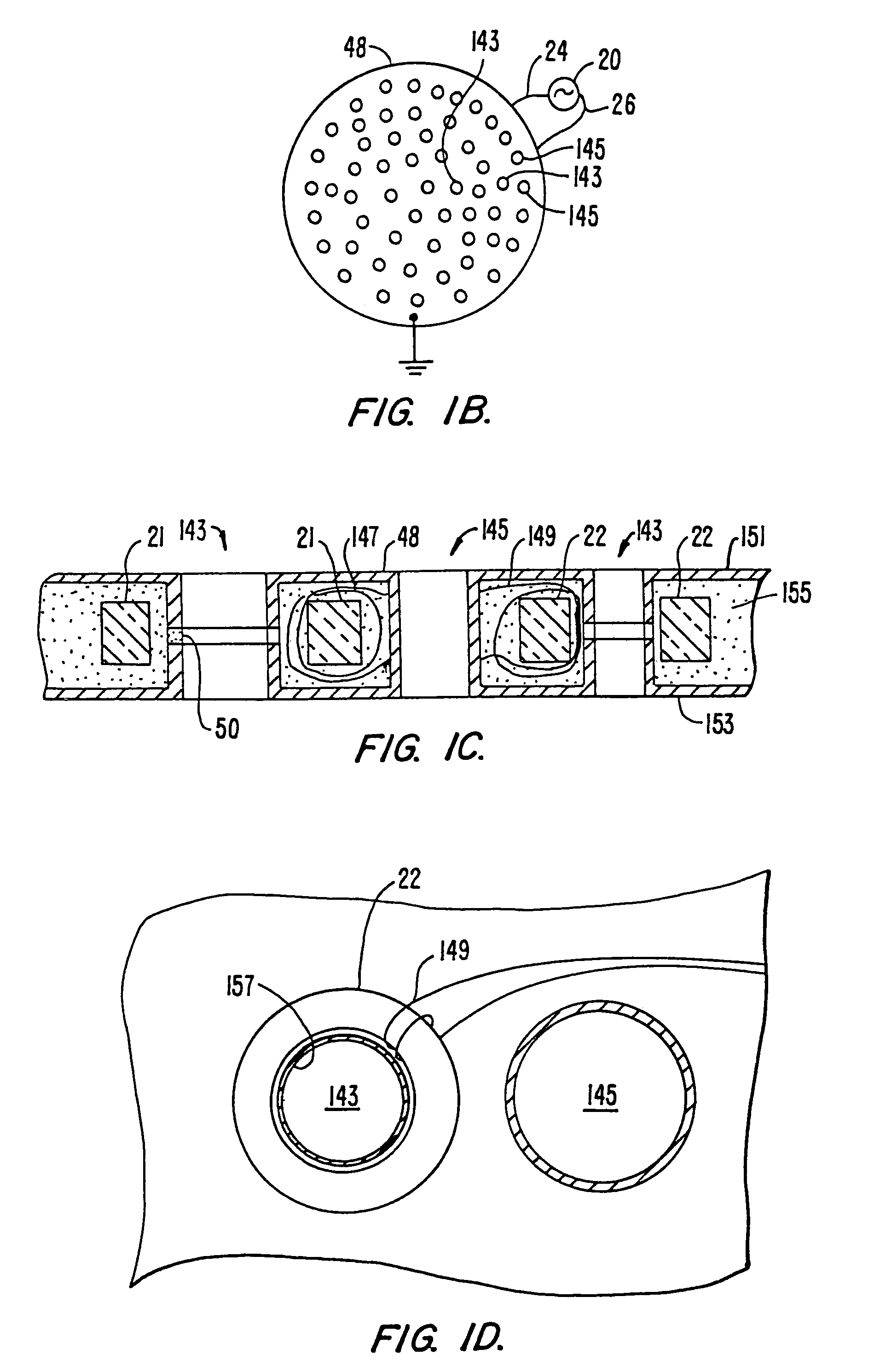Multi-core transformer plasma source
a transformer and plasma source technology, applied in the direction of electric discharge tubes, chemical vapor deposition coatings, coatings, etc., can solve the problems of non-uniform plasma density, device or material compatibility with this type of plasma formation, and create defects, so as to minimize the erosion of the inner nozzle material, improve the effect of extraction gradient, and improve the effect of ion flux
- Summary
- Abstract
- Description
- Claims
- Application Information
AI Technical Summary
Benefits of technology
Problems solved by technology
Method used
Image
Examples
Embodiment Construction
I. Introduction
[0042]Embodiments of the present invention produce a plasma from multiple cores to achieve various beneficial effects. In one embodiment, many small cores are used to achieve a uniform plasma over a large surface area. In another embodiment, multiple cores are used to provide a high plasma density with a compact, efficient plasma generator. In another embodiment, the directionality of the plasma is used to provide an efficient source of ions for ion implantation. In yet another embodiment, the temperature profile of the plasma across the center of the core provides a compact, efficient plasma torch. These and other aspects of the invention will be further understood in light of the specific embodiments discussed below and reference to the accompanying figures. It is understood that other embodiments may be utilized and structural changes may be made without departing from the scope of the present invention.
II. Exemplary Substrate Processing System
[0043]FIG. 1A illustr...
PUM
| Property | Measurement | Unit |
|---|---|---|
| Dielectric polarization enthalpy | aaaaa | aaaaa |
| Magnetic energy | aaaaa | aaaaa |
| Current | aaaaa | aaaaa |
Abstract
Description
Claims
Application Information
 Login to View More
Login to View More - R&D
- Intellectual Property
- Life Sciences
- Materials
- Tech Scout
- Unparalleled Data Quality
- Higher Quality Content
- 60% Fewer Hallucinations
Browse by: Latest US Patents, China's latest patents, Technical Efficacy Thesaurus, Application Domain, Technology Topic, Popular Technical Reports.
© 2025 PatSnap. All rights reserved.Legal|Privacy policy|Modern Slavery Act Transparency Statement|Sitemap|About US| Contact US: help@patsnap.com



